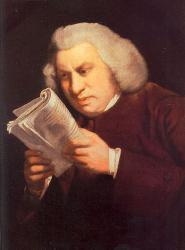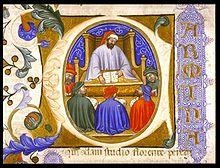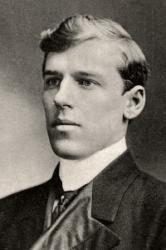Planning worship?
Check out our sister site, ZeteoSearch.org,
for 20+ additional resources related to your search.
- |
User Links
Person Results
William Henry Monk

1823 - 1889 Person Name: William Henry Monk (1823-1889) Scripture: Matthew 11:16-19 Adapter and Harmonizer of "RAVENSHAW" in Common Praise (1998) William H. Monk (b. Brompton, London, England, 1823; d. London, 1889) is best known for his music editing of Hymns Ancient and Modern (1861, 1868; 1875, and 1889 editions). He also adapted music from plainsong and added accompaniments for Introits for Use Throughout the Year, a book issued with that famous hymnal. Beginning in his teenage years, Monk held a number of musical positions. He became choirmaster at King's College in London in 1847 and was organist and choirmaster at St. Matthias, Stoke Newington, from 1852 to 1889, where he was influenced by the Oxford Movement. At St. Matthias, Monk also began daily choral services with the choir leading the congregation in music chosen according to the church year, including psalms chanted to plainsong. He composed over fifty hymn tunes and edited The Scottish Hymnal (1872 edition) and Wordsworth's Hymns for the Holy Year (1862) as well as the periodical Parish Choir (1840-1851).
Bert Polman
William Henry Monk
Theodore Baker
1851 - 1934 Person Name: Theodore Baker (1851-1934) Scripture: Matthew 11:16-19 Translator (st. 1-2) of "Lo, How a Rose E'er Blooming" in Common Praise (1998) Theodore Baker (b. New York, NY, 1851; d. Dresden, Germany, 1934). Baker is well known as the compiler of Baker's Biographical Dictionary of Musicians (first ed. 1900), the first major music reference work that included American composers. Baker studied music in Leipzig, Germany, and wrote a dissertation on the music of the Seneca people of New York State–one of the first studies of the music of American Indians. From 1892 until his retirement in 1926, Baker was a literary editor and translator for G. Schirmer, Inc., in New York City. In 1926, he returned to Germany.
Psalter Hymnal Handbook, 1987
Theodore Baker
Friedrich Layritz
1808 - 1859 Person Name: Friedrich Layritz (1808-1859) Scripture: Matthew 11:16-19 Author (st. 3) of "Lo, How a Rose E'er Blooming" in Common Praise (1998) Friedrich (also: Fridrich) Christoph Ludwig Eduard Layriz (also: Layritz, Lairitz, * January 30 1808 in Nemmersdorf, today part of Goldkronach, † March 18 1859 in Unterschwaningen ) was a German Lutheran pastor and Hymnologist.
Friedrich Layriz came from a Franconian family, went to school in Bayreuth and studied Protestant theology at the universities of Leipzig and Erlangen. In Erlangen, he was influenced by the Erlanger theology to Christian Krafft and Georg Karl von Raumer. He was pastor from 1837 to 1842 he provided the second Parochial ministry in the St. St. John's Church in Hirschlach, then from 1842 as pin preacher in St. Georgen (Bayreuth). In 1846 he was named after a literary quarrel with the priest Elias Sittig to the future Bavarian Hymns transferred to Unterschwaningen.
Layriz' importance lies in the collection and rediscovery of Lutheran chorales from the time before the Enlightenment theology, which were widely heavily revised or completely forgotten, and their original polyrhythmic melodies. In 1844 he published the programmatic core of the German hymn of Luther to Gellert with 450 hymns, the major influence on the song book design in Bavaria (1854), Germany and should have in the German-speaking Lutherans in North America. The collection and subsequently by Layriz published chorale books were certainly not historical-critical editions, but for practical use. Therefore, there are also additions and alterations by Layriz therein, such as the until now sung in Protestant churches verses 3 and 4 of "Es ist ein Ros sprung" (EC 30).
In the area of liturgy Layriz worked. He conducted research on the service in the Age of Reformation and was responsible for the musical aspect of the liturgy of Wilhelm Lohe.
http://de.wikipedia.org/wiki/Friedrich_Layriz
See also in:
Wikipedia
Friedrich Layritz
Harriet Reynolds Krauth Spaeth
1845 - 1925 Person Name: Harriet Reynolds Krauth Spaeth (1845-1925) Scripture: Matthew 11:16-19 Translator (st. 3) of "Lo, How a Rose E'er Blooming" in Common Praise (1998) Harriet Reynolds Krauth Spaeth [Harriet Krauth], 1845-1925
Born: September 21, 1845, Baltimore, Maryland.
Died: May 5, 1925, Philadelphia, Pennsylvania.
Buried: Mount Vernon Cemetery, Philadelphia, Pennsylvania.
Daughter of hymn translator Charles Krauth, Harriet attended the Girls’ School in Philadelphia, and lived independently as a writer. In 1880, she married Adolph Spaeth, pastor of St. Johannis Church in Philadelphia (and later president of the General Council of the Lutheran Church in America). She sang contralto, played the piano and organ, and for many years was the organist at St. Stephen’s Church in west Philadelphia. She provided hymn translations for The Church Book (1868), The Sunday School Hymnal (1901), and was responsible for the music edition of The Church Book (1872). Many of her essays were published in The Lutheran. When American Lutherans adopted the Common Service in 1888, she prepared an edition with notes for chanting the service. She worked zealously for the founding of the Krauth Memorial Library at the seminary in Philadelphia, and was active in the work of the Mary J. Drexel Home, the Lankenau Hospital, and the Lutheran Orphans’ Home in Germantown, Pennsylvania. Her works include:
The Deaconess and Her Works
Pictures from the Life of Hans Sachs
The Church Book with Music, 1893
Charles Porterfield Krauth: A Life (2 volumes, 1898 & 1909, with Adolph Spaeth, uncredited)
Life of Adolph Spaeth, 1916
© The Cyber Hymnal™ (www.hymntime.com/tch)
Harriet Reynolds Krauth Spaeth
Michael Praetorius

1571 - 1621 Person Name: Michael Praetorius (1571-1621) Scripture: Matthew 11:16-19 Harmonizer of "ES IST EIN ROS" in Common Praise (1998) Born into a staunchly Lutheran family, Michael Praetorius (b. Creuzburg, Germany, February 15, 1571; d. Wolfenbüttel, Germany, February 15, 1621) was educated at the University of Frankfort-an-der-Oder. In 1595 he began a long association with Duke Heinrich Julius of Brunswick, when he was appointed court organist and later music director and secretary. The duke resided in Wolfenbüttel, and Praetorius spent much of his time at the court there, eventually establishing his own residence in Wolfenbüttel as well. When the duke died, Praetorius officially retained his position, but he spent long periods of time engaged in various musical appointments in Dresden, Magdeburg, and Halle. Praetorius produced a prodigious amount of music and music theory. His church music consists of over one thousand titles, including the sixteen-volume Musae Sionae (1605-1612), which contains Lutheran hymns in settings ranging from two voices to multiple choirs. His Syntagma Musicum (1614-1619) is a veritable encyclopedia of music and includes valuable information about the musical instruments of his time.
Bert Polman
Michael Praetorius
Sir Arthur Somervell
1863 - 1937 Person Name: Arthur Somervell, 1863-1937 Scripture: Matthew 11:19 Composer of "WINDERMERE" in Common Praise b. June 5, 1863, Windermere, d. May 2, 1937, London; English composer and educationist
Sir Arthur Somervell
Johann Sebastian Bach

1685 - 1750 Person Name: J. S. Bach, 1685-1750 Scripture: Matthew 11:19 Adapter of "GILDAS (ST AUGUSTINE, WEISSE)" in Common Praise Johann Sebastian Bach was born at Eisenach into a musical family and in a town steeped in Reformation history, he received early musical training from his father and older brother, and elementary education in the classical school Luther had earlier attended.
Throughout his life he made extraordinary efforts to learn from other musicians. At 15 he walked to Lüneburg to work as a chorister and study at the convent school of St. Michael. From there he walked 30 miles to Hamburg to hear Johann Reinken, and 60 miles to Celle to become familiar with French composition and performance traditions. Once he obtained a month's leave from his job to hear Buxtehude, but stayed nearly four months. He arranged compositions from Vivaldi and other Italian masters. His own compositions spanned almost every musical form then known (Opera was the notable exception).
In his own time, Bach was highly regarded as organist and teacher, his compositions being circulated as models of contrapuntal technique. Four of his children achieved careers as composers; Haydn, Mozart, Beethoven, Mendelssohn, Schumann, Brahms, and Chopin are only a few of the best known of the musicians that confessed a major debt to Bach's work in their own musical development. Mendelssohn began re-introducing Bach's music into the concert repertoire, where it has come to attract admiration and even veneration for its own sake.
After 20 years of successful work in several posts, Bach became cantor of the Thomas-schule in Leipzig, and remained there for the remaining 27 years of his life, concentrating on church music for the Lutheran service: over 200 cantatas, four passion settings, a Mass, and hundreds of chorale settings, harmonizations, preludes, and arrangements. He edited the tunes for Schemelli's Musicalisches Gesangbuch, contributing 16 original tunes. His choral harmonizations remain a staple for studies of composition and harmony. Additional melodies from his works have been adapted as hymn tunes.
--John Julian, Dictionary of Hymnology (1907)
Johann Sebastian Bach
Samuel Johnson

1709 - 1784 Person Name: Samuel Johnson (1709-1784) Scripture: Matthew 11:16-19 Translator of "O Thou Whose Power" in Common Praise (1998)
Samuel Johnson
A. M. S. Boethius

480 - 524 Person Name: Anicius Manlius Severinus Boethius (475?-525) Scripture: Matthew 11:16-19 Author of "O Thou Whose Power" in Common Praise (1998) Anicius Manlius Severinus Boëthius, commonly called Boethius(English: /boʊˈiːθiəs/; also Boetius /boʊˈiːʃəs/; c. 480–524 AD), was a Roman senator, consul, magister officiorum, and philosopher of the early 6th century.
See more in:
Wikipedia
A. M. S. Boethius
Robert Harkness

1880 - 1961 Person Name: Robert Harkness, 1880-1961 Scripture: Matthew 11:19 Arranger of "HYFRYDOL" in The Covenant Hymnal After attending a revival meeting by Reuben Torrey and Charles M. Alexander, Harkness became Alexander’s pianist. He came to Christ shortly thereafter (on a bicycle, he said), and made several round the world tours with Torrey and Alexander.
Harkness was especially well known for his program The Music of the Cross, and as the author of correspondence courses in hymn playing. He wrote over 2,000 hymns and Gospel songs in his lifetime.
(hymntime.com/tch)
Robert Harkness


 My Starred Hymns
My Starred Hymns


